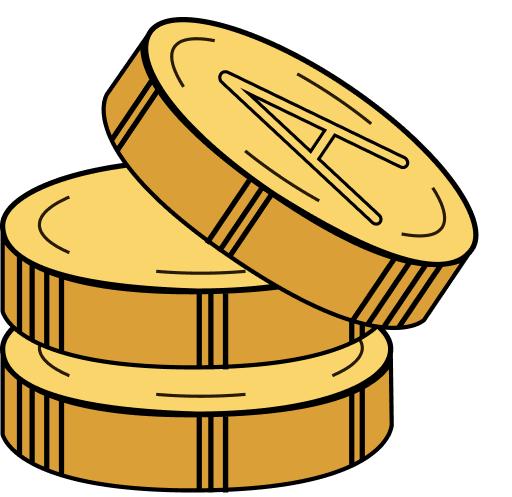Libra

Libra is a global currency and financial infrastructure built on open-source Libra blockchain and governed by Libra Association. The Libra Association is an independent, not-for-profit membership organization headquartered in Geneva, Switzerland.
The Facebook team plays the leading role in the creation and development of Libra Association and its currency.
Contents
Libra Blockchain
Libra blockchain is using the Move programming language as well as the Byzantine Fault Tolerant (BFT) consensus. The Move language helps to implement smart contracts on the Libra blockchain. The Move language also facilitates automatic proofs that transactions satisfy specific properties, such as payment transactions only changing the account balances of the payer and receiver. Data on the blockchain is protected by Merkle trees. The Libra Blockchain is a single data structure that records the history of transactions and states over time. The launch of Libra is set on a first-half 2020.
The main features of Libra blockchain, according to its White Paper are:
- Scalability to billions of accounts, which requires high transaction throughput, low latency, and an efficient, high-capacity storage system.
- Highly security, to ensure the safety of funds and financial data.
- Flexibility to be able to power the Libra ecosystem’s governance as well as future innovation in financial services.
Libra cryptocurrency
The unit of the currency called Libra. Libra is fully backed by a reserve of real assets named Libra Reserved. It is a stable digital cryptocurrency. The Reserve will help the currency to:
- to cover the costs of the system,
- to ensure low transaction fees
- to pay dividends to investors who provided capital to jumpstart the ecosystem.
According to the white paper, Libra is a “new kind of digital currency built on the foundation of blockchain technology. The mission for Libra is a simple global currency and financial infrastructure that empowers billions of people.” The goal for Libra: A stable currency built on a secure and stable open-source blockchain, backed by a reserve of real assets, and governed by an independent association. Libra is made up of three parts that will work together to create a more inclusive financial system:
- It is built on a secure, scalable, and reliable blockchain;
- It is backed by a reserve of assets designed to give it intrinsic value;
- It is governed by the independent Libra Association tasked with evolving the ecosystem.
The association is the only party able to create (mint) and destroy (burn) Libra. Coins are only minted when authorized resellers have purchased those coins from the association with fiat assets to back the new coins fully. Coins are only burned when the authorized resellers sell Libra coin to the association in exchange for the underlying assets.
Libra Association members
- Payments: Mastercard, PayPal, PayU (Naspers’ fintech arm), Stripe, Visa
- Technology and marketplaces: Booking Holdings, eBay, Facebook/Calibra, Farfetch, Lyft, MercadoPago, Spotify AB, Uber Technologies, Inc.
- Telecommunications: Iliad, Vodafone Group
- Blockchain: Anchorage, Bison Trails, Coinbase, Inc., Xapo Holdings Limited
- Venture Capital: Andreessen Horowitz, Breakthrough Initiatives, Ribbit Capital, Thrive Capital, Union Square Ventures
- Nonprofit and multilateral organizations, and academic institutions: Creative Destruction Lab, Kiva, Mercy Corps, Women’s World Banking
Libra perspectives
The Libra Association will construct well-documented APIs and libraries to enable users to interact with the Libra Blockchain.
The Libra Association will create a framework for the collaborative development of the technology behind the Libra Blockchain using the open-source methodology. Procedures will be designed for discussing and reviewing changes to the protocol and software that support the blockchain.
The association will perform extensive testing of the blockchain, which range from tests of the protocol to constructing a full-scale test of the network in collaboration with entities such as wallet services and exchanges to ensure the system is working before launch.
The association will work to foster the development of the Move language and determine a path for third parties to create smart contracts once language development has stabilized — after the launch of the Libra ecosystem.
Crypto Badges
Libra is promoting transparency in the crypto space and was awarded the Influential Badge by Crypto-Potential[1]:
How to buy Facebook Libra Cryptocurrency?
The main difference between Libra and other cryptocurrencies is that there’ll be no mining for Libra; clients will just buy it. Libra is some kind of cash that lives inside users phones. In 2020, users will be able to purchase Libra through Libra wallet apps on the phones or from some local convenience stores. Each time clients cash in their local currency (U.S. dollar, British pound, the euro, and the Japanese yen), their money goes into a big bank account called the Libra Reserve that creates and sends clients roughly one Libra token. If one of these currencies prices rises or falls, the value of Libra will stay stable. That is why shops will accept the Libra as payment without worrying the value of the coin will drop tomorrow. But first clients will have to verify their identity with a photo. Then clients will be able to spend their Libra coins while online shopping or some services. Since it’s almost free to transfer Libra coins from one account to the other, users won’t have to pay high credit card processing fees. Moreover, some Libra wallet apps and shops will give bonus discounts or free coins for signing up and paying with Libra.
See Also on BitcoinWiki
Links
- Libra official Website
- Libra on Github
- Libra on Instagram
- @libra_ on Twitter
- Libra Association on Facebook
- Venus vs Libra: star wars are about to begin
- ↑ “Libra’s profile on Crypto-Potential”, Switzerland, 26 June 2019. Retrieved on 30 June 2019.














 Twitter
Twitter
 Telegram
Telegram
